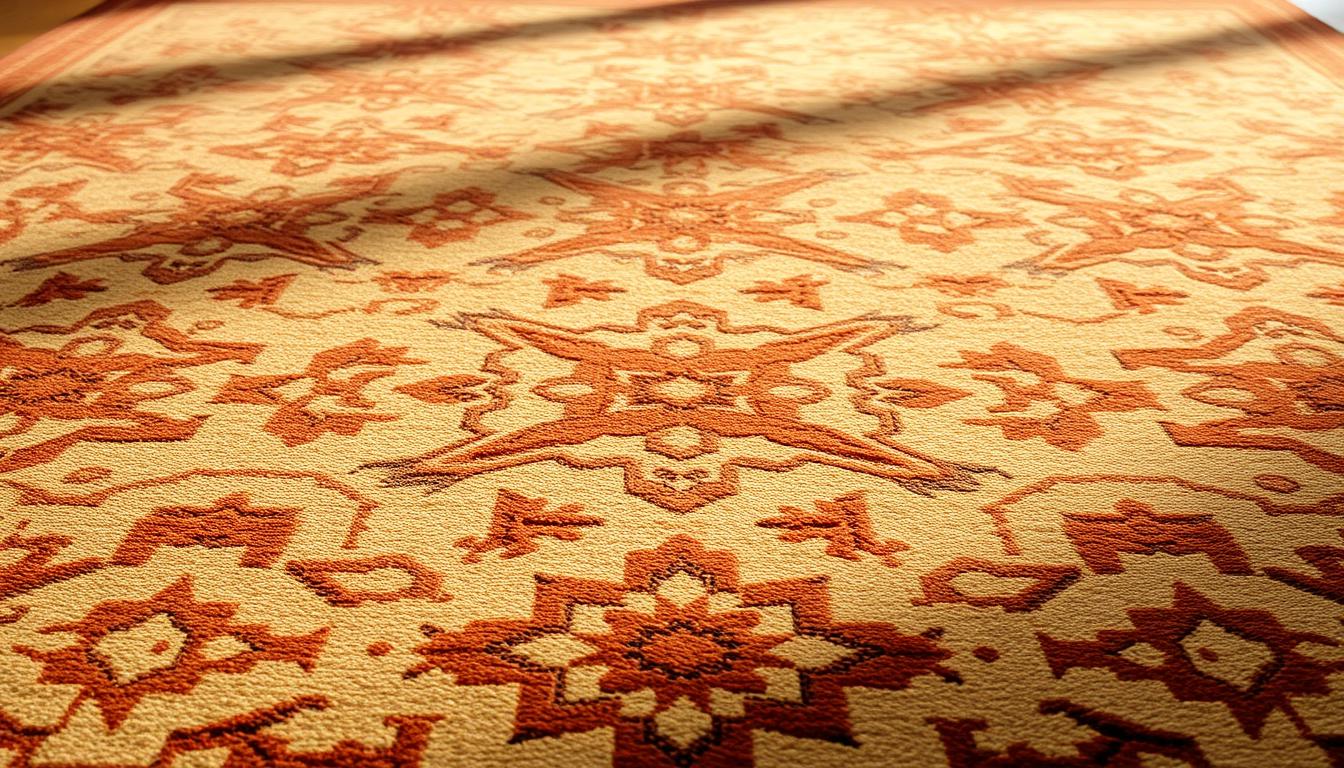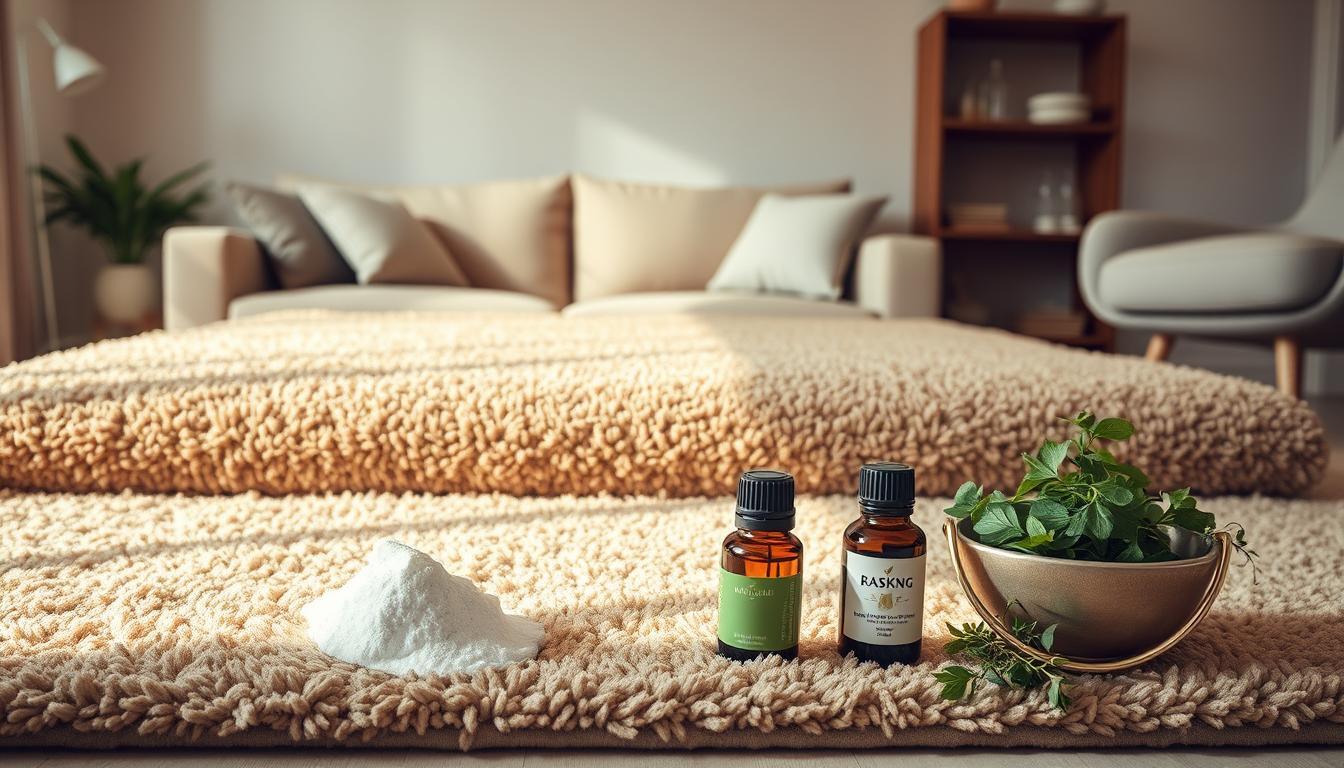
Are Tufted Rugs Soft? 3 Facts You’ll Feel Instantly
What if your floor could hug your feet every morning? While many assume all floor coverings offer similar comfort, the truth lies in how they’re made. The secret to that cloud-like sensation underfoot isn’t magic—it’s craftsmanship.

These cozy floor pieces gain their signature feel from a specialized technique. Yarn gets punched through fabric backing using precise machinery, creating dense loops that form a cushioned surface. This method allows for thicker layers compared to flatweave or knotted designs, giving you immediate softness when stepping onto them.
But not every piece feels the same. Material choices like wool or synthetic blends play a role, as do treatments applied during production. A high-density construction will cradle your feet, while thinner options might lack that luxurious sink-in effect.
Whether you’re redesigning a living room or upgrading a bedroom, understanding these details helps you choose the right balance of quality and comfort. Let’s break down what truly determines how inviting your floors will feel.
Key Takeaways
- Construction methods create inherent plushness through looped yarn layers.
- Density directly impacts cushioning—higher loops mean softer surfaces.
- Material blends influence both texture and long-term durability.
- Finishing treatments can enhance or reduce the initial cozy feel.
- Ideal for spaces where barefoot comfort matters most, like bedrooms.
The Fundamentals of Tufted Rugs
The magic behind that cloud-like texture starts with precise craftsmanship. Instead of weaving threads together, makers punch yarn through a stretched fabric base using a tufting gun or machine. This method builds dense loops that form the foundation of every step-friendly surface.

How Tufting Works to Create Plush Texture
Specialized needles force yarn through a backing material at high speeds. The loops created can remain intact for a textured finish or get sheared for a velvet-like smoothness. Unlike flatwoven designs, this single-layer construction stacks fibers vertically, creating immediate depth and cushioning.
Materials and Backing Explained
Cotton duck cloth serves as the primary foundation, stretched tightly during production. A latex coating locks yarn loops in place while adding bounce-back resilience. For those curious about longevity, these 5 must-know facts explain how material choices affect durability.
Here’s why this matters:
- Simpler construction (1-2 materials) reduces bulk while maximizing softness
- Latex adhesives prevent fiber shedding without stiffening the surface
- Higher loop density = more cushion per square inch
Are Tufted Rugs Soft? Essential Insights
Walk barefoot across different floor coverings, and you'll notice immediate differences. The inviting sensation underfoot comes from specific engineering choices. Two elements make the biggest impact: yarn quality and surface depth.

Yarn Choices and Surface Depth
Natural materials like wool or silk create springier textures than synthetic blends. Longer fibers bend more easily under pressure, giving that pillow-like response. Think of it like mattress toppers – thicker layers cradle better.
Surface depth matters just as much. Measurements between ¼" and ½" strike the perfect balance. Shorter piles stay firm for high-traffic areas, while deeper ones (over ½") mimic plush carpets. This detailed guide shows how loop density multiplies the cushion effect.
| Pile Height | Texture Feel | Best For |
|---|---|---|
| 1/4" | Firm support | Hallways, kitchens |
| 3/8" | Balanced cushion | Living rooms |
| 1/2"+ | Luxury sink-in | Bedrooms |
Uncut loops add bounce, while sheared tops feel velvety. Tightly packed formations prevent matting over time. For lasting comfort, prioritize dense constructions with natural materials.
Key Factors Influencing Rug Softness
Ever wonder why some floor coverings feel like walking on marshmallows while others resemble cardboard? Three hidden elements work together to create that irresistible underfoot experience.
Impact of Yarn Fibers and Density
Natural materials like merino wool bend like gymnasts under pressure. Their ultra-fine strands compress smoothly, offering instant cushioning. Silk fibers add fluid movement, while plant-based options like bamboo viscose drape like liquid satin.
Density acts as the multiplier. More stitches per square inch mean tighter fiber clusters. Imagine comparing a fluffy down comforter to a flat bedsheet—higher density creates that cloud-like support your feet crave.
Backing Materials and Adhesive Quality
What’s beneath matters as much as what’s on top. Latex coatings act like trampolines, letting fibers spring back after each step. Cheaper PVC or acrylic adhesives stiffen over time, creating a board-like feel.
Premium backings also prevent shedding. For lasting plushness, pair natural fibers with flexible latex. Our cleaning guide shows how proper care maintains this delicate balance.
Comparing Tufted, Braided, and Other Rug Styles
Not all floor coverings treat your feet equally. While braided designs charm with rustic appeal, tufted constructions deliver unmatched cushioning through innovative engineering. Let’s explore why your toes might prefer one over the other.
Texture and Comfort: Tufted vs. Braided
Braided styles interweave yarn strands into raised ridges, creating a textured surface that’s more visual than tactile. Tufted wool rugs flatten evenly underfoot thanks to their dense, uniform loops. This difference becomes obvious when walking barefoot:
- Surface consistency: No bumpy ridges disrupt smooth foot contact
- Compression response: High-density fibers spring back instantly
- Custom textures: Choose looped durability or sheared velvet finishes
For spaces prioritizing plushness, explore various types of rugs to find your ideal match.
Differences in Construction Methods
Tufting’s mechanical precision allows 3x more yarn per square inch compared to hand-braiding techniques. This density creates cloud-like support that molded fibers maintain over years. Braided pieces often use thinner strands twisted for visual interest rather than underfoot luxury.
Modern tufting methods blend efficiency with artistry. Makers layer premium materials like wool without sacrificing structural integrity. The result? Floor art that pampers feet while resisting wear in high-traffic zones.
Conclusion
Your floors deserve lasting luxury that evolves with your lifestyle. High-quality floor coverings crafted through tufting techniques grow cozier underfoot, their fibers adapting to daily use. Natural materials like wool develop richer textures over months, as foot traffic gently lifts and fluffs each strand.
Protect this investment with simple habits. Use vacuums featuring adjustable height settings to clean without crushing loops. Immediate spill attention prevents deep stains, while professional cleaning every 18-24 months restores bounce. Explore our in-depth maintenance guide for tailored strategies.
Durability meets customization in these designs. Select pile heights matching your room’s needs—plush depths for bedrooms, resilient mid-piles for living spaces. Proper care ensures decades of comfort, transforming functional decor into heirloom-quality pieces.
From material selection to cleaning routines, every choice enhances your home’s tactile experience. Embrace floor art that rewards patience, offering deeper softness as years pass.
FAQ
How does the tufting process affect a rug’s softness?
The tufting technique uses a specialized gun to push yarn through a fabric backing, creating loops or cut piles. This method allows for dense, plush surfaces that feel cozy underfoot. Higher pile heights and tightly packed fibers enhance comfort.
What materials make tufted options softer than other styles?
Wool and high-quality synthetic blends often deliver a luxuriously smooth texture. Natural fibers like wool have inherent softness, while advanced synthetics mimic this feel. The backing material, such as latex or cotton, also stabilizes the design without compromising comfort.
Can tufted styles withstand heavy foot traffic while staying comfortable?
Yes—durability depends on yarn density and backing quality. Tightly woven constructions with strong adhesives resist flattening over time. Regular cleaning and rotating the piece help maintain its plushness in busy areas.
How do tufted designs compare to braided or woven alternatives?
Tufted pieces typically offer thicker, cushioned surfaces due to their looped or cut-pile structure. Braided rugs, while durable, often have flatter textures. Woven styles may lack the same depth but excel in intricate patterns.
Does pile height influence how cozy a rug feels?
Absolutely. Longer piles create a softer, sink-in feel but require more maintenance. Shorter piles stay neater in high-traffic zones while still providing comfort. Balance your preference for plushness with practicality.
What care tips keep tufted rugs feeling luxurious for years?
Vacuum weekly without using a beater bar to prevent fiber damage. Blot spills immediately and consider professional cleaning for deep stains. Rotate the rug every 6–12 months to ensure even wear and preserve its texture.









